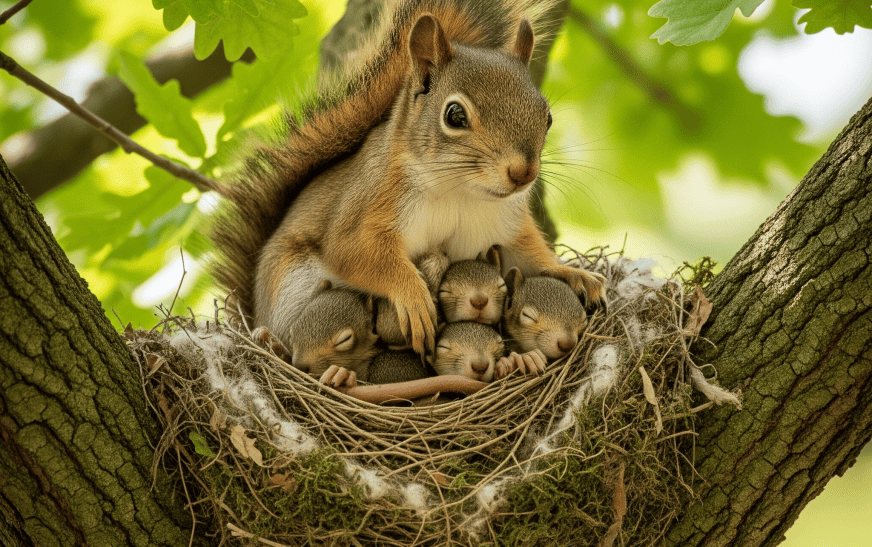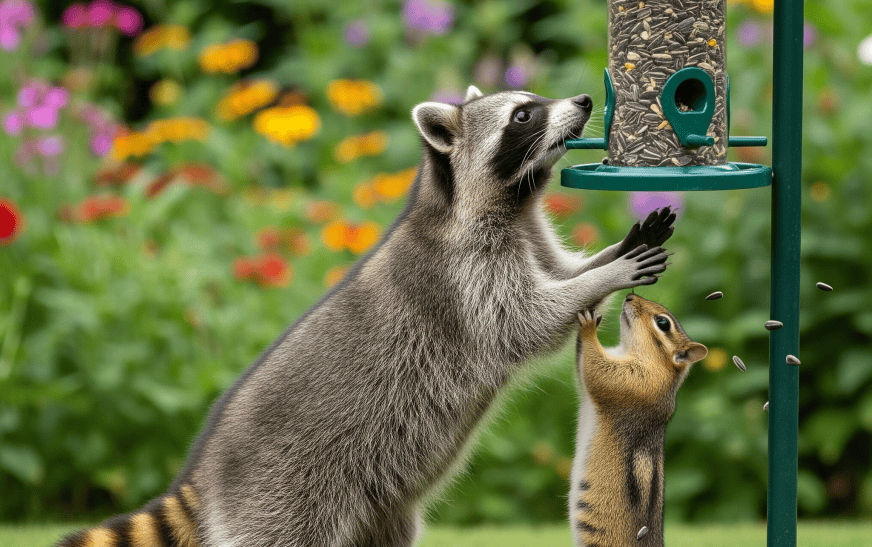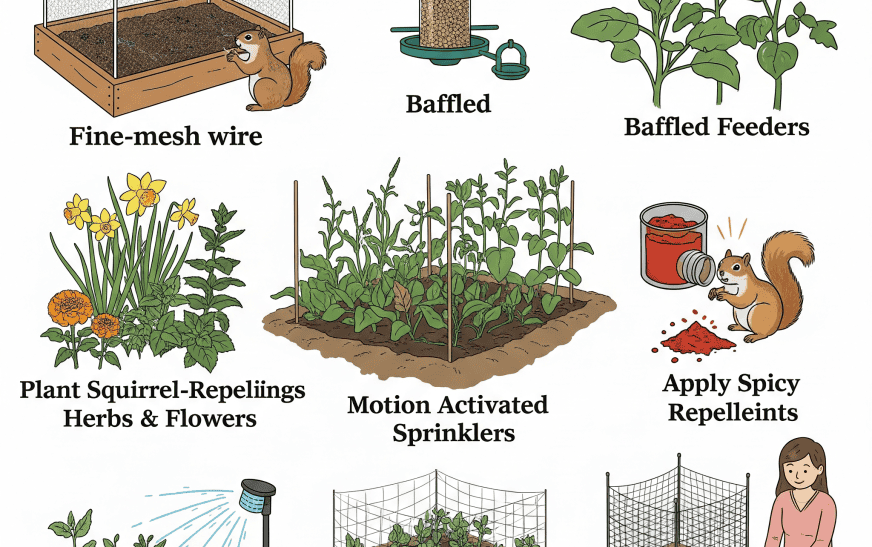Squirrels, those bushy-tailed acrobats of our parks and backyards, are a delightful presence. But have you ever wondered when these energetic creatures bring their own little ones into the world? The answer isn’t a simple date on a calendar, as the timing of squirrel births varies significantly depending on their species, the local climate, and the availability of food.
In general, squirrels in many regions have two main breeding seasons: the first in late winter or early spring (January to April) and a second time in mid-summer (June to August). This allows them to take advantage of the spring and autumn bounty of food to nourish their young. However, pinpointing the exact “when” requires a closer look at different squirrel species and geographical factors.
The Two Main Breeding Seasons for Squirrels
Squirrel reproduction is closely tied to environmental cues. The increasing daylight hours and the promise of new plant growth in late winter trigger the first mating season. This ensures that the first litter of baby squirrels, often called kits, is born when food resources are becoming abundant in the spring.
The second breeding season in mid-summer is often less intense than the first but provides an opportunity for another litter to be born before the harshness of winter sets in. The gestation period for most common squirrel species ranges from about 38 to 46 days. Following birth, the vulnerable kits remain in the drey (the squirrel’s nest) for several weeks, relying entirely on their mother’s care. They are typically weaned and begin venturing out on their own after about 8 to 10 weeks.
Breeding Timelines for Common Squirrel Species
While the general pattern holds, specific squirrel species have their own nuances in breeding schedules:
When Do Gray Squirrels Have Babies?
Both the eastern gray squirrel and its close relative, often spelled grey squirrel (more common in the UK), typically follow the two-breeding-season pattern. The first mating season usually occurs from December to February, leading to births between February and March. The second mating season takes place from May to June, with kits arriving in July and August. These are peak times for seeing young gray squirrels exploring their surroundings.
When Do Red Squirrels Have Babies?
Red squirrels, known for their smaller size and reddish fur, generally have a slightly different timeline. Their first breeding season tends to be a bit later, often from January to March, with the first litter born between March and April. If they have a second litter, it usually arrives in the late summer, around August or September. Environmental factors and food availability play a crucial role in whether red squirrels will have one or two litters in a year.
When Do Flying Squirrels Have Babies?
Flying squirrels, those nocturnal gliders of the forest, also typically have two breeding seasons. The first litters are usually born in the spring (March to May), and the second litters arrive in the late summer (August to September). Due to their secretive, nocturnal nature, observing their breeding habits can be more challenging. This cycle is part of the fascinating life of these nocturnal gliders. You can learn more about how long flying squirrels live in our detailed guide.
When Do Fox Squirrels & Ground Squirrels Have Babies?
Fox squirrels, larger than gray squirrels and with a mix of colors in their coat, generally have one main breeding season in the late winter, with births occurring in early spring (February to April). They may occasionally have a second, smaller litter in the summer.
Ground squirrels, a diverse group with varying habits, typically have one breeding season in the spring, timed to coincide with the emergence of new vegetation. The exact timing varies greatly depending on the specific ground squirrel species and its geographic location.
How Location and Climate Affect Squirrel Breeding Seasons
The geographical location and prevailing climate have a significant impact on when squirrels reproduce. Warmer climates often lead to earlier breeding seasons, while colder regions may see a delay. Here’s a general overview of how different regions can influence squirrel breeding:
| Region / State | Typical First Litter | Typical Second Litter | Notes |
|---|---|---|---|
| Florida | Late January – February | June – July | Warmer climate and abundant food can lead to earlier and longer seasons. |
| Michigan / Wisconsin | March – April | Late July – August | Colder winters delay the start of the first breeding season. |
| Texas / Georgia | February – March | July | Hotter summers can sometimes affect the success of the second litter. |
| Colorado | April – May | August | Higher altitudes and later spring thaw can shift the breeding schedule. |
| UK | Late Feb – March | July – August | Similar temperate climate patterns to the northern United States. |
| Canada (Southern Ontario) | Late Feb – March | July – August | Comparable climate to many northern US states. |
| California | January – March | June – August | Diverse climates within the state can lead to regional variations. |
Signs a Squirrel is Nesting and What to Expect
The period leading up to the birth of baby squirrels is marked by increased nesting activity. Female squirrels will be busy gathering materials such as leaves, twigs, moss, and even bits of fabric or paper to build or refurbish their drey. These nests are often located high in trees, in tree cavities, or sometimes in human-made structures like attics or sheds.
A pregnant squirrel will appear larger than usual and may be more focused on finding food and securing her nest. Once the kits are born, the mother squirrel will be the primary caregiver, nursing and protecting her young. You may observe increased activity around the nest as she forages for food to support her growing family. A typical litter size is 2 to 5 kits, which are born blind and helpless.Their first few weeks are critical, and many wonder about their chances of making it through the fragile first year of a baby squirrel’s life in the wild.
Frequently Asked Questions (FAQ)
It’s best to observe from a distance first. The mother squirrel may be nearby foraging and will return to her young. Avoid touching the baby squirrels, as your scent can deter the mother. If the babies appear truly abandoned (cold, weak, or injured, and the mother hasn’t returned for several hours), contact your local wildlife rescue organization for guidance.
Female squirrels will spend significantly more time in their nests caring for their newborns, which can make them seem less visible. However, they do need to leave the nest to find food and water. Male squirrels do not typically participate in raising the young.
Baby squirrels typically remain in the nest for about 6 to 10 weeks. After they are weaned, they will start to venture out and learn to forage on their own, but they may still stay relatively close to their mother for a few more weeks before becoming fully independent.
Conclusion
Understanding when squirrels have their babies provides a fascinating glimpse into their life cycle and adaptation to their environment. By considering the species and the local climate, we can gain a better appreciation for these ubiquitous urban and wild inhabitants. Remember to observe these creatures from a respectful distance, especially during their sensitive nesting season, and to contact wildlife professionals if you have concerns about their well-being.














